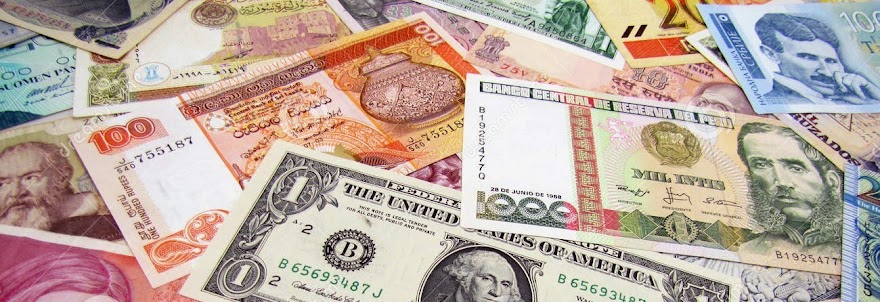Nilaish
Life Member - IBNS-IBCC
"It is surprising that commonly collectors cherish for Portrait Notes of Kings and Queens... which were issued after regulation of 1861 in India. It is a challenge for any collector, to possess any example prior to 1861!"
India has a vast history of paper money. It dates back to 1770 A.D. when Bank of Hindostan was first founded and issued paper money in India. India was divided into three Presidencies viz; Bengal Presidency, Bombay Presidency and Madras Presidency.
East India Company was ruling these three presidencies and Governor General in Council was responsible for rules and regulations in provinces. India was under East India Company Rule till 1858, when the transfer of power happened to the British Crown, Queen Victoria.
Bagachi (1997) and DasGupta (1927) recorded that Indian Banking was regulated time and again by East India Company owned banks; Bank of Bengal (1809-1922), Bank of Bombay (1840-1922) and Bank of Madras (1843-1922). The charter of Bank of Bengal was passed by Lord Gilbert Minto in 1809. As per record, Bank of Bengal is the oldest government body owned bank of India. Similarly, in Bombay Presidency; Bank of Bombay was established in 1840 through a charter. In 1843, William Bentick, Governor General founded Bank of Madras which was earlier Madras Government Bank. These three banks issued currency notes in the provinces and circulation was limited to only Company Officers, Wealthy Merchants and Treasury. A substantial collections of its banknotes can be seen in Victoria Memorial at Kolkata. I had visited the museum after reading the book: The evolution of State Bank of India, Vol. 1 by Amiya Bagachi which was published by Oxford University Press. In this book a pictorial representation of its collection is shown in black and white. A very good collection of notes from Bank of Hindostan, Bank of Bengal, Bank of Bombay and Bank of Madras is archived.
Some examples of its currency notes in my collection:
Life Member - IBNS-IBCC
"It is surprising that commonly collectors cherish for Portrait Notes of Kings and Queens... which were issued after regulation of 1861 in India. It is a challenge for any collector, to possess any example prior to 1861!"
India has a vast history of paper money. It dates back to 1770 A.D. when Bank of Hindostan was first founded and issued paper money in India. India was divided into three Presidencies viz; Bengal Presidency, Bombay Presidency and Madras Presidency.
East India Company was ruling these three presidencies and Governor General in Council was responsible for rules and regulations in provinces. India was under East India Company Rule till 1858, when the transfer of power happened to the British Crown, Queen Victoria.
Bagachi (1997) and DasGupta (1927) recorded that Indian Banking was regulated time and again by East India Company owned banks; Bank of Bengal (1809-1922), Bank of Bombay (1840-1922) and Bank of Madras (1843-1922). The charter of Bank of Bengal was passed by Lord Gilbert Minto in 1809. As per record, Bank of Bengal is the oldest government body owned bank of India. Similarly, in Bombay Presidency; Bank of Bombay was established in 1840 through a charter. In 1843, William Bentick, Governor General founded Bank of Madras which was earlier Madras Government Bank. These three banks issued currency notes in the provinces and circulation was limited to only Company Officers, Wealthy Merchants and Treasury. A substantial collections of its banknotes can be seen in Victoria Memorial at Kolkata. I had visited the museum after reading the book: The evolution of State Bank of India, Vol. 1 by Amiya Bagachi which was published by Oxford University Press. In this book a pictorial representation of its collection is shown in black and white. A very good collection of notes from Bank of Hindostan, Bank of Bengal, Bank of Bombay and Bank of Madras is archived.
Some examples of its currency notes in my collection:
Bank of Bengal, 250 Sicca Rupees, Dated 22nd October 1813, Signed by Accountant: Henry Tyler. This type is recognized as the earliest type of its banknote issued in India.
Bank of Bombay, 10 Rupees, Dated 1st November 1860.
Bank of Madras, 3000 Rupees, 184X, card.
The Challenge:
To have any example of this era is a serendipity! It is seemingly blaten that 90% collectors keep themselves away from understanding its historic beauty! I would rather make a convincing comment by encouraging collectors who are really looking to collect these historic examples!
As far it is known that a veteran collector of paper money in India will confirm its genuine appeal. The collectors who understand that buying examples of presidency notes is cumbersome...they are right! They are getting extinct from collectors market very soon. Most of it remain in private collections, which will not be offered very soon.
A genuine dealer seldom comes across any example in his life, which he can buy. Now here these bull investors hikes its price, which is again a lethal drawback. Future serious collector will go away from that profit motive price. Being a connoisseur of Indian Paper Money, I would make a fair appeal to serious collectors that please do collect as many examples as you can! It is time to realize that condition of a note is not every thing, as any serious collector tries for the highest grade possible to afford.




Hi I have 5 note of very very rare bengal notes ... any budy want call me-9597892253
ReplyDelete